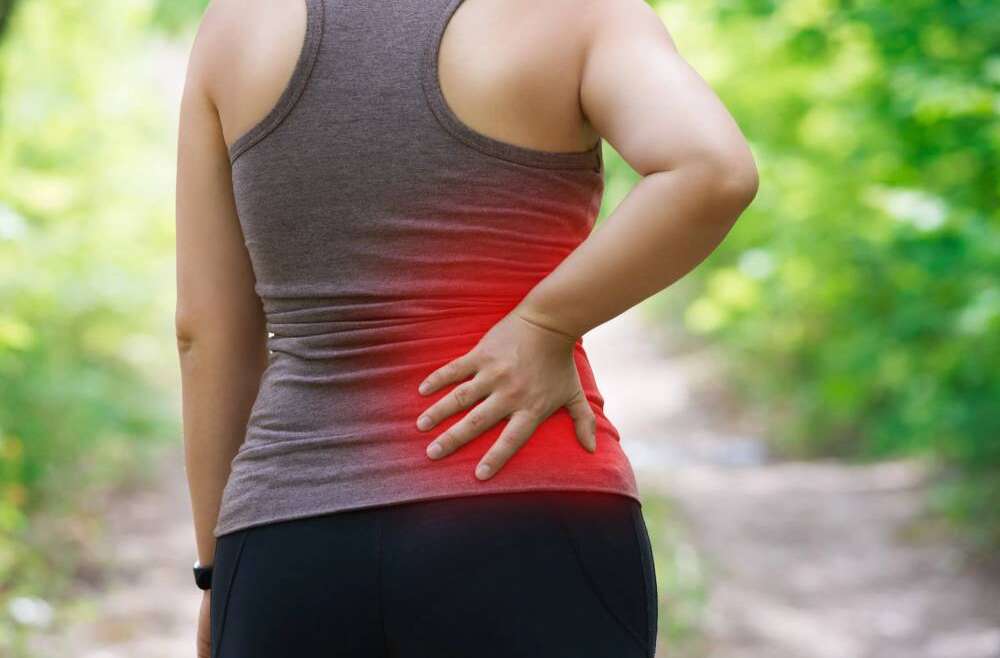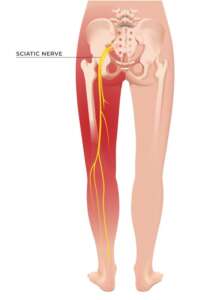As an Osteopath, Sciatica is one of the most common presentations we see during pregnancy. The sciatic nerve is a large nerve that originates in the lower back, travels down the glutes, and down the back of the legs toward your foot. Pain along the sciatic nerve distribution can occur at any time of life and is referred to as Sciatica.
Common Symptoms of Sciatica
Common symptoms reported by patients with sciatica include:
- Pain traveling down the back of the leg (can also include lower back pain, but this is not always the case).
- The pain may have a numb, tingling, shooting, or burning nature.
- It is often made worse by sitting for long periods, or sometimes during/after sleep.
The two most common places where sciatic irritation occurs are the lower back and the posterior hip. In the lower back, various structures including discs, facet joints, and other structures can pinch the nerve, which then sends the symptoms down the leg. Sometimes the nerve gets irritated through the posterior hip as it passes through the glute muscles.
There are a few reasons why this might occur during pregnancy:
- Relaxin, a hormone released during pregnancy prepares the body for labour by ‘relaxing’ some of the ligaments around the pelvis. This can then lead to more strain being placed on the other structures around the lower back and pelvis.
- Pressure on the lower back can increase as the belly grows and becomes heavier. This means the body has to work a bit harder to support itself.
Techniques That Can Help Sciatica During Pregnancy
Here are a few simple techniques that can help ease the symptoms of sciatica during pregnancy.
Movement
- Although you should avoid any movements that are irritating, staying active will help to promote healing and calm down inflammation in the nerve.
- This can be something as simple as walking. The best approach is to do a little bit, often. This might look like three 15 minute walks throughout the day (rather than on 45-minute walk).
- If walking does not irritate your lower back, gradually increase your movement levels where possible.
Self-management remedies
- Self-massage through the glutes, lower back, and hamstring
- Spiky ball/foam roller through the lower back, glute, and hamstring
- Pain relief medication (check to make sure it is safe to take during pregnancy – always consult with your GP before taking any medications).
- Ice or heat – try both and use whichever works best for you.
Try to avoid
- Stretching the hamstring directly, as this may irritate the nerve and its sheath (the tunnel that the nerve runs through).
Remember that everyone is different. These are just a few simple techniques that have been shown to work in many cases. Always seek advice from your Osteopath or healthcare professional in order to determine the specific cause of your sciatica. This will allow you to work on a tailored treatment and rehabilitation plan.
Also check this article: What are the different types of back pain?



